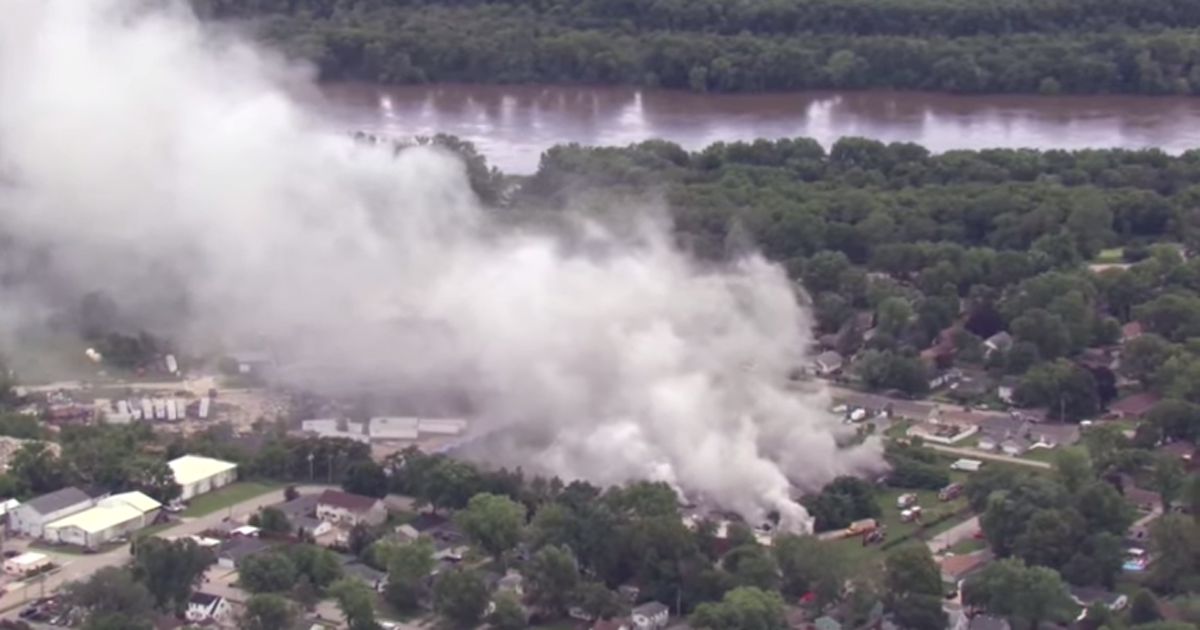Officials had no idea more than 200,000 lithium batteries were stored in an Illinois warehouse until it caught fire
At 11:45 a.m. June 29 in the small Illinois city of Morris, firefighters were dispatched to a warehouse fire. City officials say they had no idea what was in the 70,000-square-foot warehouse and that no permits were issued. Morris is about 60 miles southwest of Chicago.
What firefighters found was a burning warehouse with as many as 200,000 lithium batteries ranging in size from mobile phone batteries to those larger than automobile batteries.
At a July 2 news briefing, Morris Fire Protection and Ambulance District Chief Tracey Steffes said this was one of the largest lithium battery fires the nation has ever seen. This came four days after the fire began and he said it could take another four weeks for it to burn itself out. That same day, officials lifted the evacuation order that impacted 3,000 residents.
The warehouse owner, Jin Zheng, told ABC7Chicago that he intended to fix the leaking roof, and that he suspects water from that roof may have triggered the battery fire. Lithium is highly volatile and reacts with water by forming lithium hydroxide, a highly flammable hydrogen.
In a news conference, Chief Steffes said, “As they get wet, they short out and they ignite and explode. That is the problem we are having. The biggest hazard we have is the smoke and fumes as well as the gas from the fire. Highly poisonous and very deadly.”
Steffes said they tried using 1,000 pounds of the dry chemical agent Purple K, “hoping we could kill it and choke it out. The lithium fire laughed at the Purple-K — didn’t put a dent in it.”
The next step was to try dry Portland cement, which they hoped would coat the batteries and disrupt their chemical reaction. Portland cement is the most common type of cement used in the United States, and the agent that provides adhesion and durability to concrete. It is made by heating the raw materials, limestone and clay, first to about 1,100°F and then to 2,600°F to fuse the materials into a clinker.
Chief Steffes said they have used 28 tons of Portland cement to coat the burning batteries — and it seems to be working. It’s a technique that’s never been tried, and whether it will continue to work is anyone’s guess.
Chief Sterres said he spoke with a battery expert from Texas who advised that once the batteries begin to decompose, there is little that will stop that process. This thermal runaway does not need oxygen, he said. Moreover, there is a large quantity of unburned batteries in the warehouse that may have been compromised by the heat from the other burning batteries.
Your district may not have a warehouse flying under government radar with a dodgy roof and 200,000 batteries waiting to ignite. But it likely has unknown hazards lurking and lying in wait. Here are four tips to help almost any hazmat team better prepare for unknown, large-scale incidents like this before they happen and what to do once they do occur.
1. If you can’t know every hazard, know your first-in area. Technology and a lot of seat time driving (and walking) the district can help map out routes in and out of areas, high-risk exposures like grade schools, industrial sites or hospitals, additional nearby resources, topography and a host of other variables.
2. Build relationships early. Don’t wait until the incident to know your local resources. The Morris, Ill. incident highlights why that mantra is so often repeated in the fire service. Some of your utility folks or public works crews may have a much better handle on the local dangers. They also have equipment you may need. And, they may have contacts within state and federal government or the private sector that you would have had no reason to develop. For example, how many fire chiefs have relationships with local cement providers?
3. When faced with the unexpected, especially in the initial stages, a safe and effective outcome often boils down to doing the basics right. This means being proficient at using things like the ERG and other bread-and-butter tools.
4. Train in the district. It is easy to rely on the training ground or old, familiar training spots. But getting out in the district will add useful wrinkles to training scenarios and deepen that institutional knowledge of the district.
Original post – Copyright © 2022 HazmatNation.com. Externally linked references may hold their own independent copyright not assumed by HazmatNation











